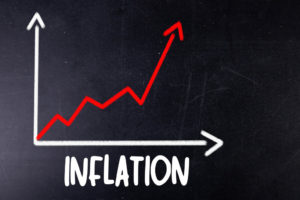
By Noah Solomon
Special to the Financial Independence Hub
The continued rise in stocks, real estate, and almost every other asset class on the planet can be attributed to three things: liquidity, liquidity, liquidity. According to legendary investor Marty Zweig:
“In the stock market, as with horse racing, money makes the mare go. Monetary conditions exert an enormous influence on stock prices. Indeed, the monetary climate – primarily the trend in interest rates and Federal Reserve policy – is the dominant factor in determining the stock market’s major direction.”
In today’s markets, you don’t have to look very hard to find strong evidence of Zweig’s theory, which explains why stock markets were making fresh highs during successive outbreaks of Covid-19 and spiking unemployment. It also explains why approximately two thirds of stock returns over the past decade are attributable to multiple expansion rather than earnings growth. It’s hard to envision things turning south when real interest rates remain highly negative, and money is so freely available.
Something is happening here but it ain’t exactly clear what
For the first time in decades, the inflation genie is threatening to escape from its bottle. The abundant global liquidity that has been the primary driver of markets is threatened by the potential need to combat inflationary pressures, which have been rearing their head after a several-decade slumber.
Despite some disconcerting inflation readings over the past several months, it is possible that this phenomenon turns out to be a Covid-induced disruption in supply chains that will prove temporary. If this scenario prevails, then rates will remain fairly low, as will the probability that stocks will crater. Conversely, it is entirely possible that the recent uptick in inflation marks the beginning of a longer-lasting trend, in which case rates could rise materially, thereby increasing the chances of a severe decline in risk assets.
There are certainly some signs that suggest that at least a portion of the recent surge in inflation may have staying power. Bridgewater, the world’s largest hedge fund, recently wrote a research report called “It’s Mostly a Demand Shock, Not a Supply Shock, and It’s Everywhere.” The authors contend global production is back to normal levels following last year’s Covid-related disruptions. On the other hand, they claim global demand has exploded. Bankim Chadha, Chief U.S. Equity & Global Strategist at Deutsche Bank Securities, summarized his recent discussions with company executives:
“Most companies noted that supply chain issues kept them from fulfilling the underlying demand, which was much stronger than they had expected. They didn’t plan their supply chains to have a sustained surge in volume for 18 months. Labor availability and cost pressures show no signs of abating any time soon, a development that is new and not welcome. Companies are however very confident in their ability to raise prices.”
Although rates have risen modestly over the past few months, they have yet to rise materially. Both central banks and market participants remain skeptical that inflation will become a serious concern, which has prevented rates from spiking and provided stocks with sufficient “cover” to remain buoyant. On a rolling 10-year basis, equities are beating bonds in the U.S. by the largest margin since 1964. As long as the money is coming the mare will keep running.
If inflation proves transitory, central banks can keep the money flowing, and the mare can continue running. On the other hand, if inflation becomes problematic, then they will be forced to aggressively withdraw stimulus and potentially end the all-you-can-eat risk-on buffet that has characterized markets for over a decade.
The 2 most critical decisions: where to invest and how much?
The two cardinal problems in investing, trading or professional gambling are:
- Finding a set of profitable opportunities
- Sizing your investments/bets
For many investors, finding opportunities is easy relative to the problem of position sizing and risk management. Examples of this problem can include a blackjack player deciding what percentage of their bankroll to wager on a given hand or a portfolio manager deciding how much capital to allocate to a given stock or asset class.
An investor with a mediocre strategy and a great risk model will become fairly successful, while one with a great strategy and a mediocre risk model will eventually go bankrupt. A 52% chance of winning is attractive, but how much of a gambler’s total bankroll should they wager on the next hand? The gambler must balance the competing forces of betting more to achieve greater profit and betting less to limit the chance of going broke. Somewhere between the extremes, there is an optimal proportion of total bankroll to bet which will maximize long-term wealth.
John Kelly & Fortune’s formula
Very few business school graduates or investment professionals have heard of the Kelly Criterion, which was developed in 1956 by an American scientist John L. Kelly. The Kelly criterion is a mathematical formula that can be used to calculate the optimal amount of capital to allocate to a given investment.
The first well-known user of the Kelly Criterion is legendary investor and grandfather of quantitative finance Edward O. Thorpe, who referred to it as “fortune’s formula.” He used Kelly’s theory to develop an optimal system for playing blackjack. Thorpe went on to outline his process in his book, Beat the Dealer, which changed the way blackjack is played.
In 1974, Thorpe founded Princeton Newport Partners (PNP), which was the world’s first market neutral hedge fund. Over its 19-year life, PNP earned an annualized return of 15.8%, as compared to 10.1% for the S&P 500 Index. The firm achieved this return with 75% less volatility than the market, and lost money in only three of its 230 months in operation. Thorpe’s returns were great on an absolute basis, but were nothing short of phenomenal on a risk-adjusted basis. Other legendary investors who have used Kelly’s formula to guide their decisions include Warren Buffett, Bill Gross, and James Simons.
At its core, the Kelly Criterion dictates that the optimal amount of capital to allocate to a given asset class or stock should be determined by the odds. All else being equal, you should increase your allocation when the odds are more favorable and curtail your commitment as the odds deteriorate.
The need to adjust one’s stance in response to changing circumstances is well summarized by John Maynard Keynes, father of modern macroeconomics. When criticized for being inconsistent during a high-profile government hearing, Keynes responded “When the facts change, I change my mind. What do you do, sir?”
Interestingly, this premise stands in stark contrast to the traditional approach to money management, whereby client portfolios maintain a fixed allocation to stocks, bonds, etc., regardless of changes in the market environment or economic backdrop. Under this approach, a client portfolio that is 60% invested in stocks and 40% invested in bonds will remain so, regardless of whether stocks are in the midst of a rip-roaring bull market or getting crushed in a bear market.
Neither we nor anyone else can know with certainty whether inflation will prove fleeting or persistent or, in the case of the latter, what the impact on markets will be. By no means does this imply that disaster is imminent. Rather, it merely means that risks have increased and that the odds are less favorable for risk assets. According to the Kelly Criterion, investors should be decreasing their allocation to equities and other risk assets or at least be prepared to do so should the outlook become increasingly cloudy.
Both the Outcome Global Tactical Asset Allocation (GTAA) and dividend-focused Canadian equity mandates employ Kelly-esque methods in their respective approaches.
Our GTAA strategy uses statistical analysis and machine-learning to determine whether and to what extent the environment is hospitable, and then adjusts its allocation to stocks and other risk assets accordingly. Since its inception nearly five years ago it has produced a steady, annualized return of 5% while exhibiting very low volatility and protecting our clients from large losses, both during the tumultuous markets of Q4/2018 and the Covid-crash of early 2020.
Similarly, our dividend-focused Canadian equity fund adjusts its holdings based on a mathematically driven, rules-based assessment of their likelihood of outperformance. Since its inception in October 2018, it has outperformed in a category where the vast majority of managers have underperformed. According to the most recent S&P Index vs. Active Scorecard, 94.3% of Canadian dividend-focused equity managers have underperformed their benchmark over the past 10 years. By contrast, since its inception in October 2018, the Outcome Enhanced Dividend fund has outperformed by 4.1% while simultaneously exhibiting lower volatility and shallower losses when stocks experienced significant declines.
 As Chief Investment Officer of Outcome Metric Asset Management, Noah Solomon has 20 years of experience in institutional investing. From 2008 to 2016, Noah was CEO and CIO of GenFund Management Inc. (formerly Genuity Fund Management), where he designed and managed data-driven, statistically-based equity funds.
As Chief Investment Officer of Outcome Metric Asset Management, Noah Solomon has 20 years of experience in institutional investing. From 2008 to 2016, Noah was CEO and CIO of GenFund Management Inc. (formerly Genuity Fund Management), where he designed and managed data-driven, statistically-based equity funds.
Between 2002 and 2008, Noah was a proprietary trader in the equities division of Goldman Sachs, where he deployed the firm’s capital in several quantitatively-driven investment strategies. Prior to joining Goldman, Noah worked at Citibank and Lehman Brothers.
Noah holds an MBA from the Wharton School of Business at the University of Pennsylvania, where he graduated as a Palmer Scholar (top 5% of graduating class). He also holds a BA from McGill University (magna cum laude).
This blog first ran in the November 2021 issue of the Outcome newsletter and is republished with permission.

